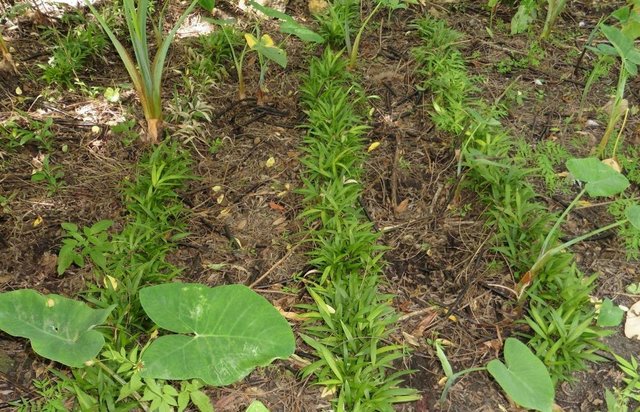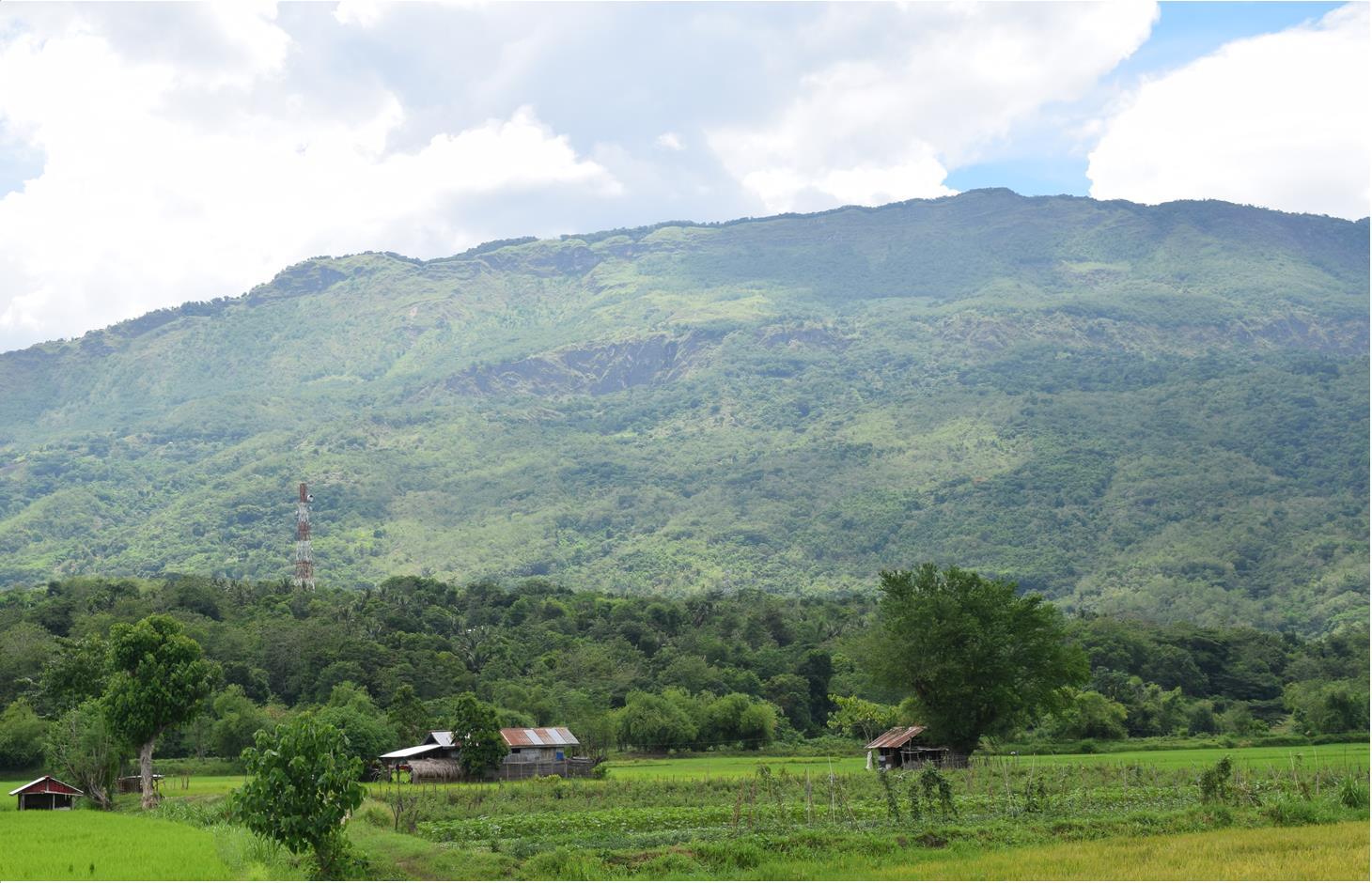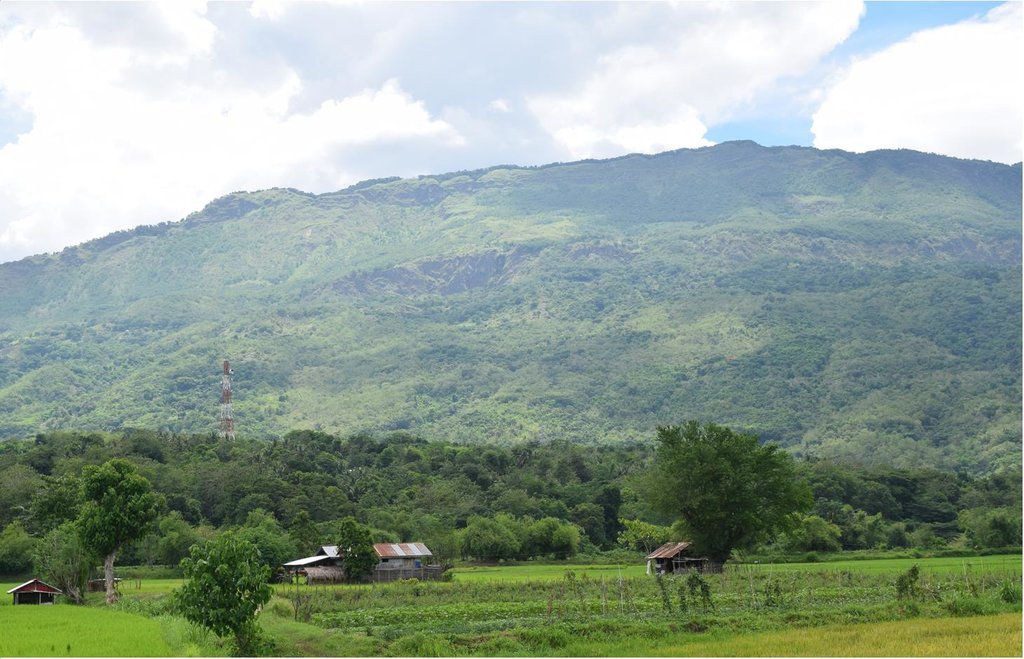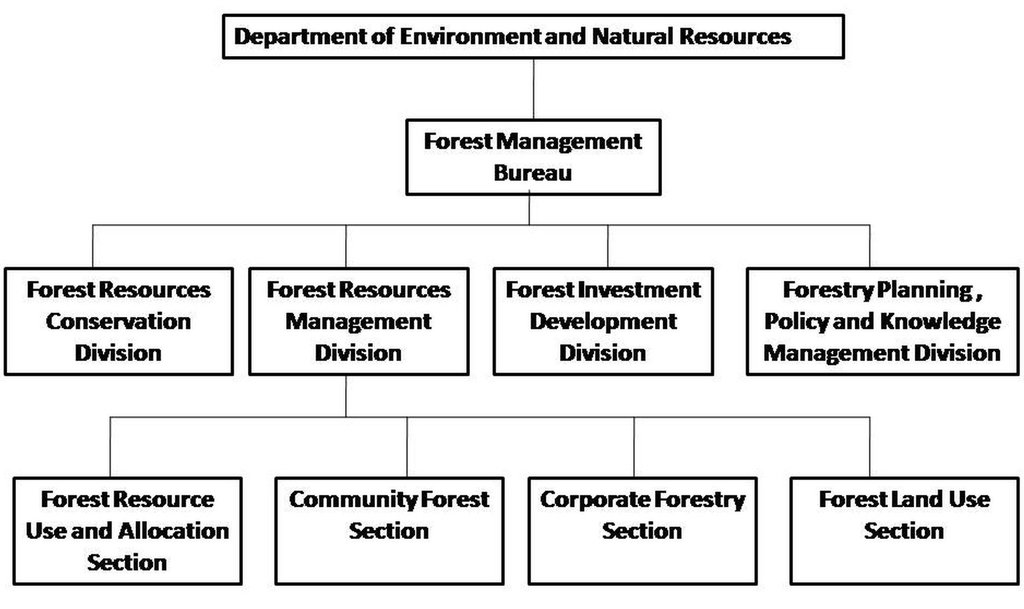Community-Based Forest Management [Philippines]
- Création :
- Mise à jour :
- Compilateur : Isabelita Austria
- Rédacteur : –
- Examinateur : Deborah Niggli
Community Forestry, Social Forestry
approaches_1956 - Philippines
Voir les sections
Développer tout Réduire tout1. Informations générales
1.2 Coordonnées des personnes-ressources et des institutions impliquées dans l'évaluation et la documentation de l'Approche
Spécialiste GDT:
Dacumos Evangeline
Bureau of Soils and Water Management-Soil Conservation and Management Division
Philippines
Spécialiste GDT:
Dinamling Djolly Ma.
Bureau of Soils and Water Management-Soil Conservation and Management Division
Philippines
Nom du projet qui a facilité la documentation/ l'évaluation de l'Approche (si pertinent)
Decision Support for Mainstreaming and Scaling out Sustainable Land Management (GEF-FAO / DS-SLM)Nom du ou des institutions qui ont facilité la documentation/ l'évaluation de l'Approche (si pertinent)
Department of Agriculture-Region VIII (DA-8) - Philippines1.3 Conditions relatives à l'utilisation par WOCAT des données documentées
Quand les données ont-elles été compilées (sur le terrain)?
21/07/2015
Le compilateur et la(les) personne(s) ressource(s) acceptent les conditions relatives à l'utilisation par WOCAT des données documentées:
Oui
1.4 Références au(x) questionnaire(s) sur les Technologies de GDT

Littuko Growing for Forest Enhancement [Philippines]
Growing of rattan is done by upland farmers as part of the Community-Based Forest Management (CBFM).
- Compilateur : Philippine Overview of Conservation Approaches and Technologies
2. Description de l'Approche de GDT
2.1 Courte description de l'Approche
Community-Based Forest Management (CBFM) refers to the organized efforts to work with communities in and near public forestlands with the intent to protect, rehabilitate, manage, conserve, and utilize the resources in partnership with the Local Government Units (LGUs) and other stakeholders.
2.2 Description détaillée de l'Approche
Description détaillée de l'Approche:
The objectives of the CBFM are the following: to develop, protect, conserve and utilize forest lands through sustainable forest management practices; to generate additional income for forest communities towards poverty reduction and hunger mitigation in the uplands; to promote equity through the provision of long term land tenure security and access to forest resources through issuance of CBFM agreements and certificate of stewardship; and to enhance the capacity of CBFM agreement holders as climate-resilient forest land resources managers.
The methods involved in the approach include agroforestry, plantation establishment, enrichment planting ,forest protection and conservation of existing forests. Agroforestry is the combination of forest trees, fruit trees and annual crops including livestock in the same piece of land. Plantation establishment is growing of forest trees in degraded grassland areas. Part of the enrichment planting is growing of rattan 'littuko', fruit trees, and indigenous species (dipterocarp,etc) along with existing trees in the area to improve forest cover and species diversification.
The project of CBFM in Nueva Vizcaya was initiated in 1998 and ended in 2002.The stages of implementation started with the preparatory stage, then the People's Organization formation and issuance of tenure instrument. It was followed by the planning stage, implementation stage then the monitoring, assessment and reporting stage.
The stakeholders in the approach are the Department of Environment and Natural Resources (DENR), Community or the People's Organization (PO), Local Government Unit (LGU), Non-government organizations, other government agencies, academe, private sector and donor institution. DENR provided the funding support in the implementation of CBFM, twenty five(25) years security of tenure renewable for another 25 years to qualified organization of forest occupant in the management of forestlands thru CBFM agreement, provision of technical assistance, formulation of guidelines, monitoring and evaluation. The POs serve as managers of the forestlands allocated to them through CBFM agreement. They are responsible in the development, protection, and maintenance of the area. The LGU provides support to communities in the implementation of CBFM within its jurisdiction.
2.3 Photos de l'approche
2.5 Pays/ région/ lieux où l'Approche a été appliquée
Pays:
Philippines
Région/ Etat/ Province:
Bayombong
Map
×2.6 Dates de début et de fin de l'Approche
Indiquez l'année de démarrage:
1998
Si l'année précise est inconnue, indiquez approximativement quand l'Approche a démarré:
il y a entre 10-50 ans
Date (année) de fin de l'Approche (si l'Approche n'est plus appliquée):
2002
2.7 Type d'Approche
- fondé sur un projet/ programme
2.8 Principaux objectifs de l'Approche
The main objectives of the approach focused on the economic, social and environmental aspect to increase income and standard of living, to develop the capacity of the communities to sustain and manage the forestlands and resources, to promote social justice through security of tenure, use rights, and to reclaim or rehabilitate degraded lands and sustain its productivity.
2.9 Conditions favorisant ou entravant la mise en œuvre de la(des) Technologie(s) appliquée(s) sous l'Approche
normes et valeurs sociales/ culturelles/ religieuses
- favorise
The three farmers associations were organized into Federation of Vista Hills, Kalongkong and Kakilingan Upland Farmers, Inc., using CBFM as entry point.
disponibilité/ accès aux ressources et services financiers
- favorise
The International Tropical Timber Organization (ITT0) provided financial support for plantation establishment experiment and for developing the area through CBFM.
cadre institutionnel
- favorise
The Buenavista Upland Development Advisory Council, with representatives from DENR, Community, DA, LGU, Academe, NCIP, and DPWH was organized to provide assistance in the implementation of CBFM in Buenavista, Bayombong, Nueva Vizcaya.
cadre juridique (régime foncier, droits d'utilisation des terres et de l'eau)
- favorise
Through CBFM, the Federation of Vista Hills, Kalongkong and Kakilingan was awarded with CBFM Agreement to manage the area for 25 years, renewable for another 25 years .
connaissances sur la GDT, accès aux supports techniques
- favorise
Through CBFM, training and technical support were provided by DENR and other service providers.
charge de travail, disponibilité de la main-d'œuvre
- favorise
It became holistic through the Federation under CBFM.
autre
- favorise
Through people's participation, the Federation was able to reduce or control occurence of forest fires in the area.
3. Participation et rôles des parties prenantes impliquées dans l'Approche
3.1 Parties prenantes impliquées dans l'Approche et rôles
- exploitants locaux des terres / communautés locales
Communities living within and near forests dependent on the resources for livelihood including indigenous people
- Spécialistes de la GDT/ conseillers agricoles
Department of Environment and Natural Resources
- chercheurs
Nueva Vizcaya State University
3.2 Participation des exploitants locaux des terres/ communautés locales aux différentes phases de l'Approche
| Participation des exploitants locaux des terres/ communautés locales | Spécifiez qui était impliqué et décrivez les activités | |
|---|---|---|
| initiation/ motivation | interactive | Community Organizing Training, Orientation about CBFM, Community Mapping |
| planification | interactive | Agroforestry and Farm Planning, Planning and Management of Community Enterprise, Formulation and Preparation of Community Resources Management Framework (CRMF), Farm Planning and Agroforestry Development |
| mise en œuvre | interactive | Livelihood training such as dressmaking, fossilized flower, agroforestry and soil and water conservation (SWC) technologies |
| suivi/ évaluation | interactive | Environmental Performance Monitoring, Project Development and Management, Project Accounting and Reporting System |
| research | interactive |
3.3 Diagramme/ organigramme (si disponible)
Description:
Organizational structure of the Forest Management Bureau at the National Level Showing the location of the community forestry section where CBFM is the major concern (DENR-FMB)
Auteur:
For. Isabelita V. Austria (DENR-Forest Management Bureau)
3.4 Prises de décision pour la sélection de la Technologie/ des Technologies
Indiquez qui a décidé de la sélection de la Technologie/ des Technologies à mettre en œuvre:
- principalement les exploitants des terres soutenus par des spécialistes de la GDT
Expliquez:
The land users have traditional farming practices which were enhanced through technical assistance and training provided to them by SLM specialist.
Spécifiez sur quelle base ont été prises les décisions:
- expériences et opinions personnelles (non documentées)
4. Soutien technique, renforcement des capacités et gestion des connaissances
4.1 Renforcement des capacités/ formation
Une formation a-t-elle été dispensée aux exploitants des terres/ autres parties prenantes?
Oui
Spécifiez qui a été formé:
- exploitants des terres
- personnels/ conseillers de terrain
Formats de la formation:
- sur le tas
- entre agriculteurs (d'exploitants à exploitants)
- zones de démonstration
Formats de la formation:
- workshops
4.2 Service de conseils
Les exploitants des terres ont-ils accès à un service de conseils?
Oui
Spécifiez si le service de conseils est fourni:
- dans les champs des exploitants?
4.4 Suivi et évaluation
Le suivi et l'évaluation font ils partie de l'Approche? :
Oui
Si oui, ce document est-il destiné à être utilisé pour le suivi et l'évaluation?
Non
4.5 Recherche
La recherche a-t-elle fait partie intégrante de l’Approche?
Oui
Spécifiez les thèmes:
- économie/ marketing
- écologie
- technologie
Donnez plus de détails et indiquez qui a mené ces recherches:
Done by the Nueva Vizcaya State University (NVSU) and the DENR-ITTO CBFM Project, Doctorate students from Nepal and Myanmar and Masteral students from DENR.
5. Financement et soutien matériel externe
5.1 Budget annuel de la composante GDT de l'Approche
Si le budget annuel précis n'est pas connu, indiquez une fourchette:
- 100 000-1 000 000
Commentez (par ex. principales sources de financement/ principaux bailleurs de fonds):
ITTO-Yokado Co., Japan; Government of Japan; USA; Australia and Republic of Korea -> together 100%
5.2 Soutiens financiers/ matériels fournis aux exploitants des terres
Les exploitants des terres ont-ils reçu un soutien financier/ matériel pour la mise en œuvre de la Technologie/ des Technologies?
Oui
Si oui, spécifiez le(s) type(s) de soutien, les conditions et les fournisseurs:
Financial support during the initial stage of CBFM implementation
5.3 Subventions pour des intrants spécifiques (incluant la main d'œuvre)
- intrants agricoles
| Spécifiez les intrants subventionnés | Dans quelle mesure | Spécifiez les subventions |
|---|---|---|
| seedlings | en partie financé | |
Si la main d'œuvre fournie par les exploitants des terres était un intrant substantiel, elle était:
- volontaire
5.4 Crédits
Des crédits ont-ils été alloués à travers l'Approche pour les activités de GDT?
Non
5.5 Autres incitations ou instruments
D'autres incitations ou instruments ont-ils été utilisés pour promouvoir la mise en œuvre des Technologies de GDT?
Non
6. Analyses d'impact et conclusions
6.1 Impacts de l'Approche
Est-ce que l'Approche a amélioré les connaissances et les capacités des exploitants des terres pour mettre en œuvre la GDT?
- Non
- Oui, un peu
- Oui, modérément
- Oui, beaucoup
Significant increase in forest cover through rehabilitation of grasslands to forest plantation. Enhanced natural regeneration through effective forest protection, enrichment planting of dipterocarp species,rattan, and multi-storey agroforestry development.
Est-ce que l'Approche a autonomisé les groupes socialement et économiquement défavorisés?
- Non
- Oui, un peu
- Oui, modérément
- Oui, beaucoup
They were made stewards of forestlands for 25 years,renewable for another 25 years. Also, they were granted use rights and more than 50% of the Peoples' Organization are with active registration and qualified to enter into livelihood development contract with the DENR thru National Greening Program(NGP) and CBFM-CARP.
Est-ce que l'Approche a amélioré les questions foncières et des droits d'utilisation qui entravent la mise en œuvre des Technologies?
- Non
- Oui, un peu
- Oui, modérément
- Oui, beaucoup
The security of tenure (CBFM Agreement) provides long-term (50 years) stewardship and resource use rights based on approved strategic plan.
Est-ce que l'Approche a conduit à des emplois, des opportunités de revenus?
- Non
- Oui, un peu
- Oui, modérément
- Oui, beaucoup
According to the study conducted by the DENR-Ecosystems Research and Development Bureau (ERDB), an increase in income of CBFM beneficiaries was realized.
Did other land users / projects adopt the Approach?
- Non
- Oui, un peu
- Oui, modérément
- Oui, beaucoup
There are 1,884 communities implementing the CBFM approach nationwide. In the case of Brgy. Buenavista, its neighboring barangay Busilac have started to adopt the CBFM approach.
Did the Approach help to alleviate poverty?
- Non
- Oui, un peu
- Oui, modérément
- Oui, beaucoup
Through income derived from wood, agroforestry products, employment or job generation.
6.2 Principale motivation des exploitants des terres pour mettre en œuvre la GDT
- augmenter la production
- augmenter la rentabilité/ bénéfice, rapport coûts-bénéfices
- conscience environnementale
- coutumes et croyances, morale
- community organizing and development
6.3 Durabilité des activités de l'Approche
Les exploitants des terres peuvent-ils poursuivre ce qui a été mis en œuvre par le biais de l'Approche (sans soutien extérieur)?
- oui
Si oui, décrivez de quelle manière:
The CBFM project at Barangay Buenavista, Bayombong, Nueva Vizcaya had financial support from the International Tropical Timber Organization (ITTO) and the DENR from 1998-2002.It was then turned-over to the Federation of Vista Hills, Kalongkong, and Kakilingan. Thereafter, the CBFM area has improved significantly in terms of forest cover, biodiversity and organizational capacity.The Federation is the manager of the forestland and its resources with the LGU and DENR providing monitoring technical support; minimal and limited financial assistance through the NGP and CBFM-CARP.
6.4 Points forts/ avantages de l'Approche
| Points forts/ avantages/ possibilités du point de vue de l'exploitant des terres |
|---|
| Multi-benefits from multi-storey and agroforestry practices. |
| Indigenous Knowledge Systems and Practices (IKSP) of upland communities including indigenous people. |
| Points forts/ avantages/ possibilités du point de vue du compilateur ou d'une autre personne ressource clé |
|---|
| Secured tenure |
6.5 Faiblesses/ inconvénients de l'Approche et moyens de les surmonter
| Faiblesses/ inconvénients/ risques du point de vue de l’exploitant des terres | Comment peuvent-ils être surmontés? |
|---|---|
| Limited market access for CBFM products. | Develop market information systems to improve bargaining power of communities. Encourage value adding and primary processing. |
| Faiblesses/ inconvénients/ risques du point de vue du compilateur ou d'une autre personne ressource clé | Comment peuvent-ils être surmontés? |
|---|---|
| Poor financial management, record keeping by the POs, and members. | Enhance training of CBFM farmers in simple accounting,record keeping, and auditing. |
7. Références et liens
7.1 Méthodes/ sources d'information
- visites de terrain, enquêtes sur le terrain
- interviews/entretiens avec les exploitants des terres
Liens et modules
Développer tout Réduire toutLiens

Littuko Growing for Forest Enhancement [Philippines]
Growing of rattan is done by upland farmers as part of the Community-Based Forest Management (CBFM).
- Compilateur : Philippine Overview of Conservation Approaches and Technologies
Modules
Aucun module trouvé





